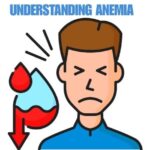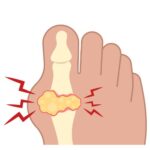Heart disease, a term that encompasses various cardiovascular conditions, is one of the leading causes of morbidity and mortality worldwide. Understanding heart disease is crucial for prevention, early detection, and effective management. This article provides an in-depth look at heart disease, including its types, symptoms, causes, risk factors, diagnosis, treatment, and prevention strategies.
What is Heart Disease?
Heart disease refers to a range of conditions that affect the heart’s structure and function. It primarily includes:
- Coronary Artery Disease (CAD): The most common type, caused by the buildup of plaque in the coronary arteries, leading to reduced blood flow to the heart.
- Heart Attack (Myocardial Infarction): Occurs when blood flow to a part of the heart is blocked for long enough to cause damage to the heart muscle.
- Heart Failure: A chronic condition where the heart cannot pump enough blood to meet the body’s needs.
- Arrhythmias: Abnormal heart rhythms that can affect how well the heart works.
- Valvular Heart Disease: Involves damage to one or more of the heart’s valves, affecting blood flow.
- Congenital Heart Defects: Structural problems with the heart present from birth.
Symptoms of Heart Disease
Recognizing the symptoms of heart disease is crucial for early diagnosis and treatment. Symptoms can vary significantly depending on the type of heart disease and may not always be obvious. Here are detailed descriptions of common symptoms associated with various forms of heart disease:
1. Chest Pain or Discomfort
- Description: Often referred to as angina, chest pain may feel like pressure, squeezing, fullness, or pain. It can also manifest as a sense of heaviness in the chest.
- Characteristics: The discomfort may last a few minutes or go away and come back. It can occur during physical activity, stress, or even at rest.
2. Shortness of Breath
- Description: This symptom can occur during physical activities or at rest, indicating that the heart may not be pumping efficiently.
- Types: It may be experienced as:
- Dyspnea on exertion: Difficulty breathing during physical activity.
- Paroxysmal nocturnal dyspnea: Sudden shortness of breath during sleep that may awaken the person.
- Orthopnea: Difficulty breathing when lying flat.
3. Fatigue
- Description: Unusual tiredness can be a sign of heart disease, especially if it occurs after minimal physical activity.
- Context: Fatigue may result from the heart’s reduced ability to pump blood effectively, leading to inadequate oxygen and nutrient delivery to the body.
4. Palpitations
- Description: This symptom involves the sensation of the heart racing, fluttering, or pounding. It can be accompanied by dizziness or lightheadedness.
- Causes: Palpitations may result from irregular heartbeats (arrhythmias) or other underlying conditions.
5. Dizziness or Lightheadedness
- Description: Feeling dizzy or lightheaded can occur due to decreased blood flow to the brain, often linked to arrhythmias or reduced heart function.
- Associated Symptoms: This may be accompanied by fainting or near-fainting episodes.
6. Swelling (Edema)
- Description: Fluid retention can lead to swelling in various body parts, especially the legs, ankles, and feet.
- Mechanism: This occurs when the heart fails to pump effectively, causing fluid buildup in the body’s tissues.
7. Nausea or Indigestion
- Description: Some individuals may experience nausea, indigestion, or a sensation of fullness, particularly during a heart attack.
- Context: This can sometimes be mistaken for gastrointestinal issues, especially in women.
8. Pain or Discomfort in Other Areas
- Description: Pain may not be limited to the chest. Discomfort can radiate to the arms, back, neck, jaw, or stomach.
- Gender Differences: Women are more likely to experience atypical symptoms, such as back or jaw pain, compared to men.
9. Cold Sweat
- Description: Profuse sweating, often accompanied by anxiety or discomfort, can indicate a heart attack.
- Context: This symptom may occur suddenly and without physical exertion.
10. Changes in Sleep Patterns
- Description: Difficulty sleeping or changes in sleep patterns may be associated with heart disease, particularly in individuals with heart failure or arrhythmias.
- Impact: Sleep disturbances can exacerbate fatigue and stress.
While many symptoms of heart disease can be vague or easily attributed to other causes, recognizing these signs and seeking medical attention promptly can significantly impact outcomes. If you or someone you know experiences any combination of these symptoms, especially chest pain or shortness of breath, it’s crucial to seek immediate medical help. Early diagnosis and intervention can prevent complications and improve heart health. Regular check-ups with a healthcare provider are essential for monitoring heart health and addressing any concerns.
Causes and Risk Factors of Heart Disease
Heart disease encompasses various conditions that can affect the heart’s structure and function. Understanding the causes is essential for prevention and management. The factors leading to heart disease can be broadly categorized into non-modifiable and modifiable causes.
1. Non-Modifiable Causes
These are factors that cannot be changed but can significantly influence the risk of heart disease:
Age
- Impact: The risk of heart disease increases as people age. Men are generally at higher risk from an earlier age, while women’s risk increases after menopause due to hormonal changes.
Family History
- Genetic Factors: A family history of heart disease can elevate an individual’s risk. Genetic predisposition may affect how one metabolizes fats, cholesterol levels, and overall cardiovascular health.
Gender
- Differences in Risk: Men tend to develop heart disease at a younger age compared to women. However, post-menopause, women’s risk increases significantly due to the decline in protective estrogen levels.
2. Modifiable Causes
These factors can be influenced by lifestyle choices and medical management:
Atherosclerosis
- Definition: Atherosclerosis is the buildup of fatty deposits (plaque) in the arterial walls, which can lead to narrowing and hardening of the arteries.
- Contributing Factors: High cholesterol levels, smoking, high blood pressure, and diabetes can accelerate the development of atherosclerosis.
High Blood Pressure (Hypertension)
- Impact: Hypertension puts extra strain on the heart and blood vessels, increasing the risk of heart disease, heart failure, and stroke.
- Causes: Factors contributing to hypertension include obesity, excessive salt intake, alcohol consumption, and a sedentary lifestyle.
High Cholesterol
- Types of Cholesterol:
- LDL (Low-Density Lipoprotein): Often referred to as “bad” cholesterol, high levels can lead to plaque buildup in the arteries.
- HDL (High-Density Lipoprotein): Known as “good” cholesterol, higher levels can help remove LDL cholesterol from the bloodstream.
- Risk Factors: Diets high in saturated and trans fats, lack of physical activity, and genetic factors can lead to elevated cholesterol levels.
Diabetes
- Impact: Diabetes, especially type 2, significantly increases the risk of heart disease. High blood sugar levels can damage blood vessels and nerves that control the heart.
- Interrelation: Often associated with obesity, hypertension, and high cholesterol, diabetes creates a complex interplay that exacerbates cardiovascular risk.
Smoking
- Tobacco Use: Smoking is a leading cause of heart disease. It damages blood vessels, reduces oxygen in the blood, and increases blood pressure and heart rate.
- Secondhand Smoke: Exposure to secondhand smoke also increases the risk of heart disease for non-smokers.
Physical Inactivity
- Sedentary Lifestyle: Lack of regular physical activity contributes to obesity, high blood pressure, high cholesterol, and diabetes—all risk factors for heart disease.
- Benefits of Exercise: Regular physical activity helps improve cardiovascular health by strengthening the heart muscle, lowering blood pressure, and improving cholesterol levels.
Unhealthy Diet
- Impact of Poor Nutrition: Diets high in processed foods, sugars, unhealthy fats, and sodium can lead to obesity, high cholesterol, and hypertension.
- Heart-Healthy Foods: Emphasizing fruits, vegetables, whole grains, and healthy fats can help reduce the risk of heart disease.
Obesity
- Definition: Obesity is defined as having a body mass index (BMI) of 30 or higher. It is a significant risk factor for heart disease.
- Consequences: Excess body fat can lead to increased cholesterol, hypertension, and diabetes, further elevating heart disease risk.
Chronic Inflammation
- Role of Inflammation: Chronic inflammation in the body can damage blood vessels and contribute to the development of atherosclerosis.
- Associated Conditions: Conditions like rheumatoid arthritis, lupus, and other inflammatory diseases can increase heart disease risk.
Stress
- Impact of Stress: Chronic stress may lead to unhealthy behaviors like poor diet, smoking, and inactivity, all of which can increase heart disease risk.
- Physiological Effects: Stress can also lead to elevated blood pressure and heart rate, contributing to cardiovascular strain.
3. Other Contributing Factors
Sleep Apnea
- Definition: Sleep apnea is a sleep disorder characterized by pauses in breathing during sleep, leading to disrupted sleep patterns.
- Impact: It is associated with increased blood pressure and a higher risk of heart disease.
Excessive Alcohol Consumption
- Guidelines: While moderate alcohol consumption may have some heart health benefits, excessive drinking can lead to high blood pressure, cardiomyopathy, and other cardiovascular problems.
Hormonal Factors
- Menopause: The drop in estrogen levels during menopause can increase the risk of cardiovascular disease in women.
Heart disease is caused by a combination of non-modifiable and modifiable factors. While age, gender, and family history play significant roles, many risk factors can be managed or changed through lifestyle modifications and medical interventions. Awareness of these causes is vital for individuals to take proactive steps toward reducing their risk of heart disease and maintaining overall cardiovascular health. Regular check-ups, healthy lifestyle choices, and open communication with healthcare providers are essential components of effective prevention and management strategies.
Diagnosis of Heart Disease
Diagnosing heart disease involves a comprehensive assessment of a patient’s medical history, symptoms, and various diagnostic tests. Early detection is crucial for effective treatment and management. Here’s a detailed overview of the diagnostic process:
1. Medical History and Physical Examination
Medical History
- Symptom Inquiry: The doctor will ask about symptoms such as chest pain, shortness of breath, fatigue, and palpitations. The duration, frequency, and severity of symptoms are important for diagnosis.
- Risk Factors: Discussion will include personal and family medical history, including risk factors such as smoking, high blood pressure, diabetes, high cholesterol, and family history of heart disease.
- Lifestyle Factors: The physician may inquire about diet, exercise habits, and alcohol consumption.
Physical Examination
- Vital Signs: Blood pressure, heart rate, and respiratory rate will be measured.
- Heart Auscultation: Listening to the heart sounds with a stethoscope can reveal abnormal rhythms or murmurs, which may indicate underlying issues.
- Peripheral Examination: Checking for swelling in the legs and feet, which can indicate heart failure or poor circulation.
2. Diagnostic Tests
Electrocardiogram (ECG or EKG)
- Function: An ECG measures the electrical activity of the heart and can identify irregularities in heart rhythm, signs of previous heart attacks, or areas of ischemia (reduced blood flow).
- Procedure: Electrodes are placed on the chest, arms, and legs to record the heart’s electrical impulses.
Echocardiogram
- Function: This ultrasound test visualizes the heart’s structure and function, assessing the size and shape of the heart, the condition of the heart valves, and the movement of the heart walls.
- Types:
- Transthoracic Echocardiogram: A standard, non-invasive procedure performed by placing a transducer on the chest.
- Transesophageal Echocardiogram: A more invasive procedure where a transducer is inserted down the esophagus for clearer images.
Stress Test
- Function: This test evaluates how the heart performs under physical stress, which can help diagnose coronary artery disease.
- Types:
- Exercise Stress Test: The patient walks on a treadmill or rides a stationary bike while heart rate and rhythm are monitored.
- Pharmacologic Stress Test: Used for those unable to exercise, where medications simulate the effects of exercise on the heart.
Cardiac Catheterization
- Function: A procedure that involves inserting a thin tube (catheter) into a blood vessel, usually in the groin or wrist, and guiding it to the coronary arteries to evaluate blood flow and identify blockages.
- Angiography: A dye is injected into the arteries to make them visible on X-ray images, helping to identify any blockages or abnormalities.
Blood Tests
- Lipid Profile: Measures cholesterol levels (including LDL, HDL, and triglycerides) to assess cardiovascular risk.
- High-Sensitivity C-Reactive Protein (hs-CRP): This test measures inflammation in the body, which can indicate a higher risk of heart disease.
- Natriuretic Peptides: Tests for BNP or NT-proBNP can help assess heart failure.
- Other Markers: Tests for blood sugar, kidney function, and liver enzymes may also be conducted to assess overall health.
3. Advanced Imaging Techniques
Cardiac MRI
- Function: A non-invasive imaging technique that provides detailed images of the heart’s structure and function, particularly useful for assessing heart muscle conditions and congenital heart disease.
Coronary CT Angiography (CTA)
- Function: A specialized CT scan that visualizes blood vessels in the heart. It helps identify coronary artery disease and can assess the presence of plaques.
4. Risk Assessment Tools
- Framingham Risk Score: A tool used to estimate the 10-year cardiovascular risk based on various factors, including age, gender, cholesterol levels, blood pressure, smoking status, and diabetes.
- ASCVD Risk Calculator: Developed by the American College of Cardiology and American Heart Association, this calculator estimates the 10-year risk for atherosclerotic cardiovascular disease.
The diagnosis of heart disease is a multifaceted process that combines a thorough medical history, physical examination, and various diagnostic tests. Early detection is vital for effective management and treatment, helping to reduce the risk of serious complications such as heart attacks or heart failure. If you have risk factors for heart disease or experience symptoms, it’s important to consult a healthcare professional for an appropriate evaluation and diagnosis. Regular monitoring and follow-up care are key to maintaining heart health.
Treatment of Heart Disease
The treatment of heart disease varies based on the specific condition, its severity, and the patient’s overall health. A comprehensive approach often involves lifestyle modifications, medications, and, in some cases, surgical interventions. Here’s a detailed overview of the treatment options available for heart disease:
1. Lifestyle Modifications
Dietary Changes
- Heart-Healthy Diet: Adopt a diet rich in fruits, vegetables, whole grains, lean proteins, and healthy fats (e.g., omega-3 fatty acids from fish).
- Reduce Saturated Fats and Trans Fats: Limit foods high in saturated fats (like fatty cuts of meat and full-fat dairy) and avoid trans fats (found in many processed foods).
- Limit Sodium: Reducing salt intake can help lower blood pressure. Aim for less than 2,300 mg of sodium per day.
- Moderate Alcohol Consumption: If you drink alcohol, do so in moderation—up to one drink per day for women and two for men.
Physical Activity
- Regular Exercise: Aim for at least 150 minutes of moderate aerobic activity or 75 minutes of vigorous activity each week, along with muscle-strengthening exercises on two or more days.
- Incorporate Movement: Simple changes, like taking the stairs, walking instead of driving short distances, or engaging in active hobbies, can significantly enhance cardiovascular health.
Weight Management
- Healthy Weight: Maintaining a healthy weight can reduce the strain on the heart and decrease the risk of developing conditions like diabetes and hypertension.
Smoking Cessation
- Quit Smoking: Smoking is a significant risk factor for heart disease. Programs and resources are available to help individuals quit.
2. Medications
Medications are often prescribed to manage heart disease and its risk factors. Common categories include:
Antihypertensives
- Purpose: To lower high blood pressure and reduce the risk of heart disease.
- Examples:
- ACE Inhibitors: Help relax blood vessels (e.g., lisinopril, enalapril).
- ARBs: Angiotensin II receptor blockers (e.g., losartan, valsartan).
- Beta-Blockers: Reduce heart rate and blood pressure (e.g., metoprolol, atenolol).
Cholesterol-Lowering Medications
- Statins: These are the most commonly prescribed medications to lower LDL cholesterol and reduce cardiovascular risk (e.g., atorvastatin, simvastatin).
- Other Lipid-Lowering Agents: Include ezetimibe and PCSK9 inhibitors, which can be used if statins are insufficient or not tolerated.
Antiplatelet Agents
- Purpose: To prevent blood clots by inhibiting platelet aggregation.
- Examples: Aspirin and clopidogrel (Plavix) are commonly used, especially in patients with coronary artery disease or after heart attacks.
Anticoagulants
- Purpose: To prevent blood clots, particularly in patients with atrial fibrillation or other conditions that increase clot risk.
- Examples: Warfarin, rivaroxaban, and apixaban.
Other Medications
- Diuretics: Help reduce fluid retention and lower blood pressure (e.g., furosemide).
- Nitrates: Used to relieve angina symptoms by dilating blood vessels (e.g., nitroglycerin).
- Heart Failure Medications: Such as digoxin, which helps the heart pump more effectively.
3. Surgical Procedures and Interventions
In some cases, surgical procedures may be necessary to treat heart disease. Common procedures include:
Angioplasty and Stenting
- Purpose: To open blocked coronary arteries. A small balloon is inflated in the artery to widen it, and a stent may be placed to keep it open.
Coronary Artery Bypass Grafting (CABG)
- Purpose: A surgical procedure that creates a new pathway for blood to flow to the heart by bypassing blocked arteries. This is often done when multiple arteries are blocked.
Heart Valve Repair or Replacement
- Indication: For patients with valvular heart disease, surgery may be required to repair or replace damaged heart valves to restore normal blood flow.
Implantable Devices
- Pacemakers: Devices implanted to regulate heart rhythms in patients with arrhythmias.
- Implantable Cardioverter Defibrillators (ICDs): For patients at high risk of sudden cardiac arrest, these devices monitor heart rhythm and deliver shocks if life-threatening arrhythmias occur.
4. Cardiac Rehabilitation
- Overview: A medically supervised program designed to help patients recover from heart surgery or heart-related conditions.
- Components:
- Supervised Exercise Training: Gradually increasing physical activity levels.
- Education: Information on heart-healthy living, including diet, exercise, and stress management.
- Psychosocial Support: Counseling and support groups to help patients cope with the emotional aspects of heart disease.
5. Ongoing Monitoring and Follow-Up Care
- Regular Check-Ups: Consistent follow-up with healthcare providers is essential for monitoring heart health, adjusting treatment plans, and screening for complications.
- Self-Monitoring: Patients are encouraged to monitor their blood pressure, weight, and symptoms at home, reporting any significant changes to their healthcare provider.
The treatment of heart disease requires a multifaceted approach, including lifestyle changes, medications, and potentially surgical interventions. Each treatment plan should be tailored to the individual, considering the specific type of heart disease, associated risk factors, and overall health. Collaborating closely with healthcare providers and making informed lifestyle choices are key components of effective heart disease management and prevention. Regular follow-ups and monitoring are vital to ensure optimal heart health and quality of life.
Prevention of Heart Disease
Preventing heart disease is essential for maintaining cardiovascular health and reducing the risk of serious complications like heart attacks and strokes. While some risk factors are non-modifiable (like age and family history), many can be influenced through lifestyle changes and proactive health measures. Here’s a detailed overview of effective prevention strategies:
1. Adopt a Heart-Healthy Diet
Nutritional Guidelines
- Focus on Whole Foods: Incorporate a diet rich in fruits, vegetables, whole grains, lean proteins (such as fish, poultry, beans, and legumes), and healthy fats (like olive oil and avocados).
- Limit Saturated and Trans Fats: Reduce intake of high-fat meats, full-fat dairy products, and processed foods. Choose low-fat or fat-free options when possible.
- Increase Fiber Intake: Soluble fiber found in oats, beans, lentils, and fruits can help lower cholesterol levels.
- Reduce Sodium: Aim for less than 2,300 mg of sodium per day. Use herbs and spices for flavor instead of salt.
- Limit Added Sugars: Minimize consumption of sugary beverages, candies, and desserts. Opt for natural sweeteners in moderation.
2. Engage in Regular Physical Activity
Recommended Activity Levels
- Aerobic Exercise: Aim for at least 150 minutes of moderate-intensity aerobic exercise (like brisk walking or cycling) each week or 75 minutes of vigorous-intensity exercise (like running).
- Strength Training: Include muscle-strengthening activities at least two days a week to improve overall fitness and metabolic health.
- Flexibility and Balance: Incorporate stretching and balance exercises to maintain flexibility and prevent falls.
Tips for Staying Active
- Find Enjoyable Activities: Choose exercises that you enjoy to make it easier to stay consistent.
- Incorporate Movement into Daily Life: Take the stairs instead of the elevator, walk or bike for short trips, and schedule regular breaks to stand and move if you have a sedentary job.
3. Maintain a Healthy Weight
Weight Management Strategies
- Set Realistic Goals: Aim for a gradual weight loss of 1-2 pounds per week if you are overweight or obese.
- Portion Control: Pay attention to serving sizes, and consider using smaller plates to help manage portions.
- Mindful Eating: Practice mindful eating by being aware of hunger and fullness cues and avoiding distractions during meals.
4. Quit Smoking
Smoking Cessation Support
- Benefits of Quitting: Stopping smoking can significantly reduce the risk of heart disease, improve overall health, and enhance quality of life.
- Resources for Help: Utilize counseling services, support groups, and smoking cessation programs. Over-the-counter and prescription medications can also aid in quitting.
5. Manage Stress
Stress Reduction Techniques
- Mindfulness and Meditation: Practices like mindfulness meditation can help reduce stress and improve mental well-being.
- Regular Exercise: Physical activity is a powerful stress reliever that can also improve mood.
- Hobbies and Interests: Engage in activities that bring joy and relaxation, such as reading, gardening, or spending time with loved ones.
- Professional Help: Consider therapy or counseling for managing chronic stress or anxiety.
6. Monitor and Manage Health Conditions
Regular Check-Ups
- Routine Screenings: Regular check-ups with healthcare providers are essential for monitoring blood pressure, cholesterol levels, blood sugar, and overall cardiovascular health.
- Manage Chronic Conditions: Work with your healthcare provider to effectively manage conditions such as hypertension, diabetes, and high cholesterol through lifestyle changes and medications as needed.
7. Limit Alcohol Consumption
Guidelines for Moderate Drinking
- Recommended Limits: If you drink alcohol, do so in moderation—up to one drink per day for women and two drinks per day for men.
- Healthier Alternatives: Consider non-alcoholic beverages or water as alternatives to alcoholic drinks.
8. Stay Informed and Educated
Awareness of Risk Factors
- Know Your Numbers: Understand your blood pressure, cholesterol levels, and other key health indicators.
- Education: Stay informed about heart disease risk factors, symptoms, and prevention strategies through reliable sources and healthcare providers.
9. Build a Support System
Importance of Social Connections
- Community Support: Engage with family, friends, or support groups that promote healthy habits and can provide encouragement and accountability.
- Healthcare Collaboration: Maintain open communication with your healthcare team about your health goals and any concerns regarding heart disease prevention.
Preventing heart disease is a proactive endeavor that involves a combination of lifestyle modifications, regular monitoring, and education. By adopting heart-healthy habits and addressing risk factors, individuals can significantly reduce their risk of developing heart disease. Working closely with healthcare providers and building a supportive community can further enhance the effectiveness of prevention strategies, leading to better cardiovascular health and improved quality of life. Regular check-ups and open discussions about heart health are vital for staying on track and making informed decisions.

Heart disease is a complex and multifaceted condition that requires awareness, prevention, and effective management. By understanding the symptoms, causes, risk factors, and treatment options, individuals can take proactive steps toward heart health. Regular check-ups, a healthy lifestyle, and early intervention are key to reducing the risk of heart disease and promoting overall well-being. If you have concerns about your heart health, consult a healthcare professional for guidance and support.







